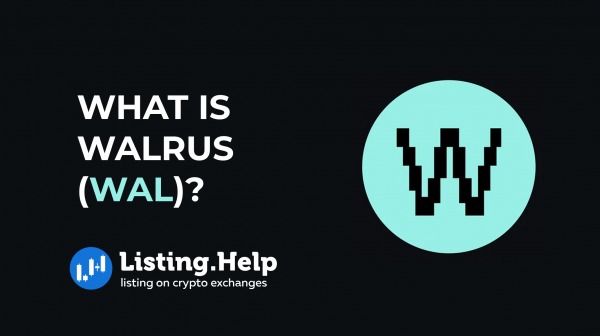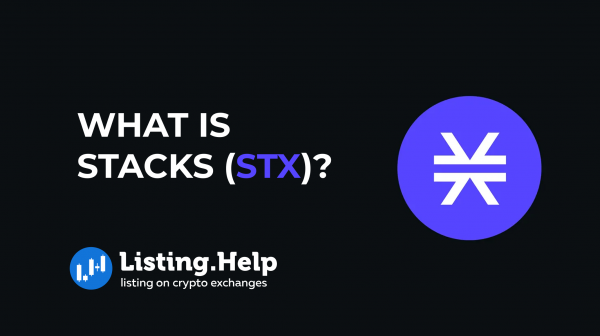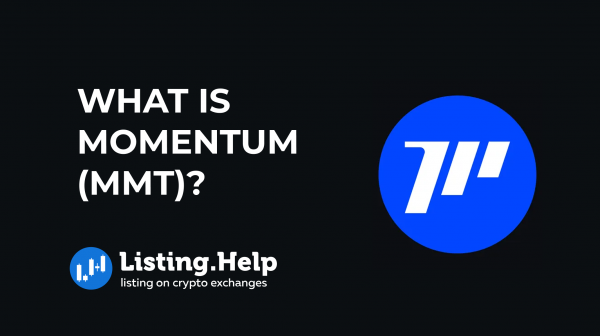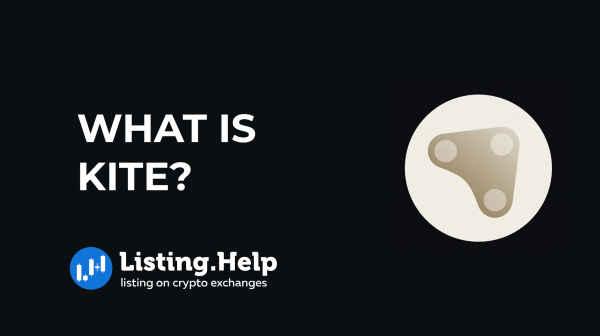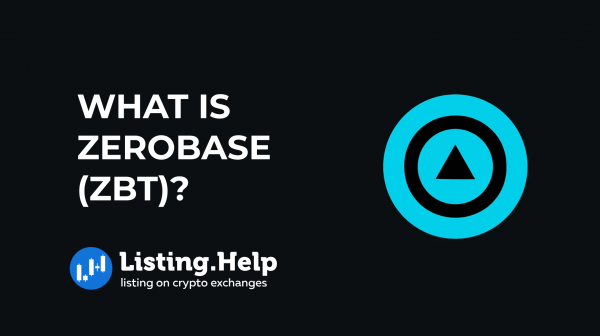What Is Cosmos (ATOM)?
 September 26, 2024
September 26, 2024 Updated: September 26 2024, 01:31
Updated: September 26 2024, 01:31
LEAVE A REQUEST
Launching your own token project? Our experts are ready to help with listing on exchanges, market making, marketing and other solutions
SUBMIT APPLICATIONInteroperability refers to the capacity of a digital system, such as a blockchain, to exchange and share data with other similar systems, even when they differ slightly. It’s something most people didn’t fully appreciate until they entered the world of cryptocurrencies and blockchain technologies.
Initially, blockchain platforms struggled to achieve this kind of connectivity. In the early days, when Bitcoin was the only major network, there wasn’t much need for it. Then Ethereum appeared, offering the ability to build decentralized applications. However, its limitations in scalability and flexibility opened the door for many new blockchains, each with its own strengths, such as improved scalability, a focus on gaming or NFTs, lower transaction fees, and more.
Ethereum, with its distinctive advantages, gained a large user base. Yet, these blockchains remained isolated, much like separate islands in a vast ocean, with very limited and complex ways to communicate with each other.
This is where the Cosmos ecosystem comes into play. By facilitating connections between different networks, Cosmos aims to create a more integrated infrastructure for the development of Web3 technologies.
What is Cosmos in Crypto?
Cosmos is often described by its creators as an “Internet of blockchains,” aiming to connect various crypto networks through open-source tools that make transactions between them easier.
What sets Cosmos apart is its emphasis on flexibility and the ability for different blockchains to work together. Instead of focusing on growing a single network, Cosmos is designed to support an ecosystem where multiple networks can share data and tokens automatically, without needing a central authority to manage the process.
Each blockchain built within Cosmos, known as a “zone,” operates independently but is linked to the Cosmos Hub. The Hub acts as a central ledger, tracking the status of each zone and maintaining communication between them.
The Cosmos Hub operates as a proof-of-stake blockchain and relies on its native cryptocurrency, ATOM, for power and security.
To stay updated on Cosmos and its developments, users can visit its website, which features an evolving roadmap. For more frequent updates, the Cosmos blog offers tutorials, news, and insights on the network’s growing technology.
How does Cosmos (ATOM) work?
Cosmos is a project aimed at building a network of interconnected blockchains that can work together seamlessly. Launched in 2014 by Ethan Buchman and Jae Kwon, the Cosmos network is composed of a Proof of Stake main blockchain, called the Cosmos Hub, and individual blockchains referred to as Zones.
The Cosmos Hub acts as the central chain, managing the transfer of assets and data between these Zones while also offering a unified security layer. All of this operates through Tendermint, a consensus mechanism developed by Cosmos, and a general application interface. Transactions within the network are powered by ATOM, Cosmos’s native cryptocurrency.
The Cosmos network is structured across three key layers:
1. Networking – Enables communication between blockchains, ensuring transaction confirmations and other messages are relayed to the Cosmos Hub.
2. Application – Keeps the network updated on the latest transactions and balances.
3. Consensus – Coordinates how nodes agree on adding new transactions to the blockchain.
These layers are integrated through a set of open-source tools. Tendermint, for instance, combines the networking and consensus layers into a pre-built system, allowing developers to focus only on the application layer. This streamlines the development process, reducing both time and resources needed to build on Cosmos.
What is Cosmos Hub?
Cosmos Hub is the main blockchain within the Cosmos network, designed to link various custom blockchains known as Zones. It monitors the state of each connected Zone through the Inter-Blockchain Communication Protocol (IBC), allowing data to move smoothly between Zones. Acting as a central ledger, the Cosmos Hub facilitates the exchange of messages between Zones using IBC transactions. The IBC protocol operates with two types of transactions: one confirms the latest block’s hash in a Zone, and the other verifies the authenticity of information sent between Zones.
For example, if two decentralized applications (DApps) on separate Zones need to interact, they send messages via Cosmos Hub. The Hub records the communication, and both Zones log the results on their own blockchains. This system ensures there is a trace of the transaction across multiple chains, earning Cosmos its reputation as the “Internet of Blockchains.”
What are Cosmos Zones?
Zones are custom-built blockchains within the Cosmos ecosystem, designed for a wide range of uses. Similar to sidechains in other blockchain systems, each Zone manages its own transactions, mints tokens, and develops its own features. Despite their differences, all Zones can communicate with one another as long as they are connected to the Cosmos network and permitted to interact.
The Cosmos system uses a Hub and Spoke model, where Hubs, such as Cosmos Hub, serve as connectors between Zones. While Cosmos Hub is one of the most popular, other Hubs exist, and anyone can create a new Hub or Zone, as the network is open to all. However, Hubs and Zones have the authority to restrict which blockchains they interact with. By connecting to a Hub, a blockchain can access any Zone linked to that Hub, and Hubs themselves can connect with one another.
What is Cosmos SDK?
Cosmos SDK is a toolkit that simplifies the creation of custom blockchains. As an open-source development kit, it provides users with the building blocks to launch their own blockchain, with Tendermint Core as its default consensus protocol. The SDK offers pre-built modules and can be customized with plug-ins, allowing developers to design specific features according to their needs.
Whether building public Proof of Stake chains or permissioned Proof of Authority blockchains, the Cosmos SDK provides a flexible platform. For example, Binance Chain was developed using Cosmos SDK, demonstrating its wide range of capabilities.
What is ATOM?
ATOM is the native cryptocurrency of the Cosmos network, serving three main purposes:
1. It is used to pay transaction fees, with costs based on the required computational resources.
2. ATOM holders can participate in Cosmos Hub’s governance, with voting power proportional to the amount of ATOM they own.
3. It is staked by validators, who are rewarded for their role in the consensus process.
ATOM was originally distributed through an Initial Coin Offering (ICO) and has no fixed supply, making it inflationary. New ATOM tokens are created as staking rewards, with the inflation rate adjusted dynamically based on the amount of ATOM being staked and the number of participants in the network.
Staking ATOM
To become a validator on the Cosmos Hub network, ATOM must be staked, following the principles of a proof-of-stake system. Validators earn rewards in ATOM for their role in maintaining the network. The Tendermint consensus mechanism then determines which validator will create the next block through a process involving delegators. Delegators cast votes on which validator should be chosen, and the top 125 validators are selected for the task.
This system allows both validators and delegators to earn rewards. However, they also face potential penalties if they fail to act responsibly. This process, known as slashing, results in the loss of a portion of their staked assets if a validator violates the rules.
For delegators, careful consideration of the validator they support is crucial. In the event of a slashing, delegators can lose between 0.01% and 5% of their staked assets, depending on the severity of the violation.
Why Use ATOM?
The Cosmos network attracts users due to its emphasis on enabling communication between different blockchains. This interoperability makes the platform appealing for developers and projects looking to create integrated systems.
Several projects have already been built on the Cosmos network, including a stable cryptocurrency designed to maintain consistent value and a decentralized finance (DeFi) platform that allows traders to leverage their assets.
Investors may consider adding ATOM to their portfolios if they believe that developers will increasingly turn to frameworks like Cosmos, which simplify the creation and launch of custom blockchains.

For more insights and updates on the crypto world, don’t forget to check out our blog at Listing.Help







 December 29, 2025
December 29, 2025 
